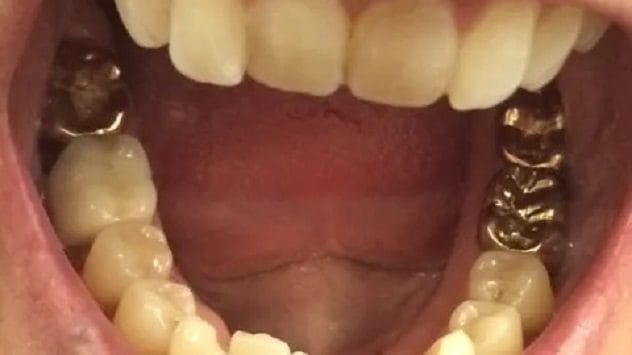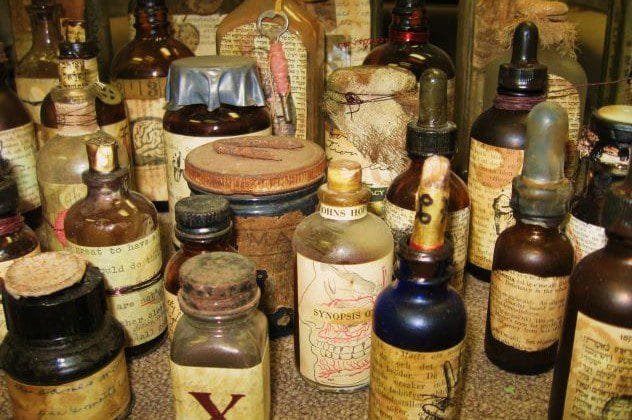History is filled with tales that blur the line between bizarre and downright unbelievable. When it comes to medicine, some claims have been so outlandish they’ve captivated, fooled, and even scandalized entire generations before being exposed as elaborate hoaxes. From peculiar conditions to miracle cures, these stories serve as a fascinating reminder of human gullibility and ingenuity. Get ready to explore some of the most peculiar medical deceptions ever recorded!
10. The Human-Dog Hybrid Hoax
Imagine a creature that’s part human, part dog. It sounds like something from a sci-fi movie, right? Well, an internet story claimed Israeli scientists were studying such a hybrid, a cross between a human and a Labrador retriever. The tale even suggested that workers found the remains of another similar creature, possibly its parent, linked to a high-profile political family’s son.
The story spread like wildfire, helped by a strange photo of what looked like a half-woman, half-dog (or pig) mother nursing its young. But the truth was far less sensational. The “creature” in the photo was actually a sculpture named “The Young Family” by artist Patricia Piccinini, part of her 2003 “We Are Family” exhibit. No human-dog hybrid, just clever art and even cleverer storytelling!
9. The Great TV Fainting Spell
The Phil Donahue Show was known for tackling important social topics back in the 70s and 80s. But one episode in January 1985 became memorable for a very different reason. During a live taping about gay senior citizens, audience members started fainting one after another! Seven people passed out during that single show.
Was it the studio heat? Or something more mysterious? Nope! It was all a cleverly orchestrated stunt by a group called Fight Against Idiotic Neurotic Television (FAINT). Their leader, media hoaxer Alan Abel, organized the mass fainting to protest what he considered the poor quality of television. One can only imagine what he’d think of TV today!
8. Cello Scrotum – A Musical Malady?
The name “cello scrotum” might make you chuckle, and that’s exactly what its inventors intended. For a staggering 35 years, this supposed medical condition was believed by some, all thanks to a prank. It started when Dr. P. Curtis wrote to the British Medical Journal about “guitar nipple.” Thinking this was a hoax, John Murphy and Dr. Elaine Murphy decided to join the fun.
Elaine wrote a letter, signed by John, published in 1974, claiming to have encountered “cello scrotum,” supposedly caused by irritation from a cello. When they finally revealed their prank decades later, the Murphys pointed out that anyone who’d actually seen a cello played would know such a condition was impossible. A long-running medical joke indeed!
7. The Boy with the Golden Tooth

Back in the late 16th century, when astrology often guided medicine, a peculiar story emerged. A young boy in Silesia, Christoph Müller, was said to have grown a tooth made of pure gold! Jakob Horst, a medical professor, investigated and confirmed the tooth was real gold. He even wrote a paper explaining it through astrology, suggesting an unusual alignment of planets and intensified sun rays turned the boy’s jawbone to gold.
However, as time went on and the tooth got worn down from chewing and tests, it was revealed to be just a thin gold layer fitted over a normal tooth. Christoph refused further examination, but a drunken nobleman, curious and persistent, accidentally exposed the truth after stabbing the boy’s cheek. The physician treating the wound discovered the veneer. While the hoaxer escaped, Christoph was imprisoned. On the bright side, this incident led to the first documented creation of a molded gold crown in dentistry!
6. Vilcabamba – The Mythical Fountain of Youth
Who wouldn’t want to live a super long life? In the 1970s, stories swirled about an Ecuadorian village called Vilcabamba, supposedly a place where people commonly lived past 100, with one resident even reaching 134! Journalists, including those from National Geographic, took the bait, and tourists flocked to this “fountain of youth.”
But was it real? In 1978, researchers Richard Mazess and Sylvia Forman dug into the claims. Their findings burst the bubble: no one in Vilcabamba was actually over 100. The average age of those thought to be super-seniors was only 86. One man claiming to be 127 was, in reality, a spry 91. The secret to long life in Vilcabamba turned out to be more myth than magic.
5. Bottled Breath for a Longer Life

Here’s a quirky one from the 18th century. Physician Johann Heinrich Cohausen wrote a book called Hermippus redivivus, which discussed ways to live longer. Tucked inside was a very strange idea: an elixir made by bottling the breath of young women. Consuming this, he claimed, could extend a person’s lifespan.
Sounds a bit creepy, right? Well, Cohausen was actually pulling a prank! In the final pages of his work, he revealed the whole thing was a satire, a scholarly joke. So, this wasn’t a fraud meant to deceive for profit, but rather a playful jab at the era’s obsession with longevity.
4. Vision-Dieter Glasses – See Your Way Thin?

The world has seen countless weight loss gimmicks, from strange pills to fad diets. In the 1970s, one of the most eye-catching (literally!) was the Vision-Dieter glasses. These spectacles claimed to help you lose weight by decreasing cravings and hunger, all thanks to “secret European color technology.”
Originally, the inventor wanted to make glasses that would change how food packaging looked, hoping to make shoppers less tempted by colorful containers. But then, seeing the potential in the diet craze, he marketed them as a weight loss tool. Unsurprisingly, the Food and Drug Administration (FDA) stepped in, seizing the color-tinted glasses for misbranding. Most were eventually destroyed when the person behind them didn’t come forward.
3. Metallic Tractors – Zapping Pain Away?
The 18th century was a wild time for medical ideas, many of them quite far-fetched. One strange product marketed for pain relief was a set of “metallic tractors.” Invented by Connecticut physician Elisha Perkins, these were two small, pointed metal rods. Perkins claimed they could ease pain from conditions like gout and rheumatism by drawing out “noxious electrical fluids” – his theory for what caused these ailments.
Users were told to gently rub the affected area with these rods. Believe it or not, even George Washington ordered a set! However, clinical trials between 1799 and 1801 showed that any pain relief felt was simply due to the placebo effect. The tractors didn’t zap any real illnesses, just people’s wallets.
2. The Celestial Bed – An Electric Love Nest
Meet James Graham, a legendary 18th-century quack who never actually finished medical school but passed himself off as a physician. He was a big believer in “electrical medicine,” inspired by Benjamin Franklin’s experiments. His “Temple of Health” was a hotspot for aristocrats and celebrities, and its star attraction was the Celestial Bed.
This wasn’t just any bed. It was a fertility contraption designed to cure sterility and impotence. Couples could rent it for the night. The bed could tilt, had a mattress filled with aromatic herbs and straw, and was surrounded by copper coils supposedly generating a magnetic fluid to boost fertility. Gentle music played, and a mirrored ceiling decorated with flowers and erotic art added to the ambiance. Graham claimed a night in his bed would guarantee conception. A shocking, or perhaps electrifying, claim!
1. Mary Toft and the Rabbit Births
Perhaps one of the most bizarre medical hoaxes ever is the tale of Mary Toft, an 18th-century English servant. She managed to convince doctors, and even got the attention of King George I, that she had given birth to rabbits! Not just one, but multiple “litters,” supposedly totaling 15 bunnies, all stillborn.
How could this happen? Toft claimed she had been startled by a rabbit in a field. This fit with an old myth called “maternal impression,” where a strong experience during pregnancy could affect the baby. She even said she dreamt of rabbits and craved them as food. Obstetrician John Howard was convinced and spread the word. However, a surgeon sent by the king grew suspicious. He found evidence, like corn in a rabbit’s dung (proving it couldn’t have developed inside Toft), that pointed to a hoax. After a man was caught sneaking a rabbit into her room, Mary finally confessed. She’d been inserting the rabbit parts into herself, hoping the stunt would earn her a royal pension. Instead, she got a few months in jail. A truly hare-brained scheme!
These ten tales of medical trickery, ranging from the hilariously absurd to the cleverly cunning, demonstrate that the desire for miraculous cures or explanations for the unknown can sometimes lead us down a rabbit hole of deceit. They’re a testament to how far some will go for fame or fortune, and a reminder to always approach extraordinary claims with a healthy dose of skepticism. History, it seems, has its own cabinet of curiosities when it comes to medical hoaxes.
Were you fooled by any of these, or do you know of other wild medical hoaxes? Share your thoughts and stories in the comments below!










